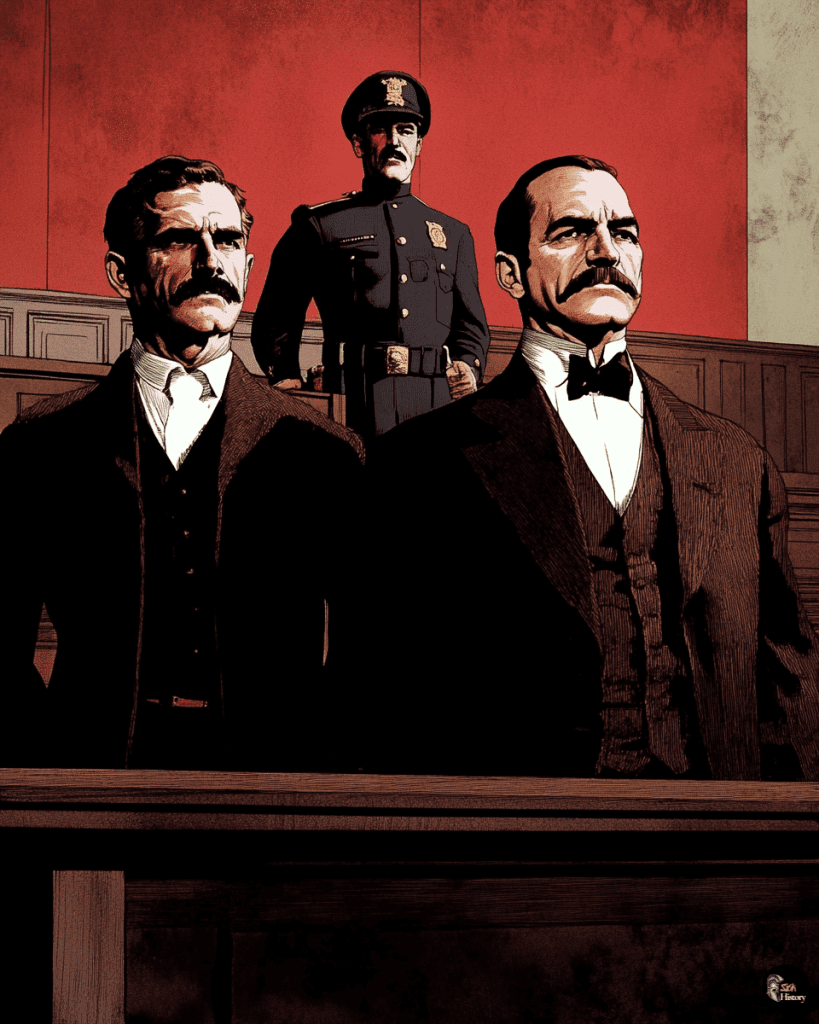The case of Nicola Sacco and Bartolomeo Vanzetti stands as one of the most controversial legal proceedings in American history.
On April 15, 1920, two men were killed during a payroll robbery in South Braintree, Massachusetts.
Sacco and Vanzetti, Italian immigrants and self-proclaimed anarchists, were arrested for the crime on May 5, 1920.
Their trial, which began in 1921, was marked by questionable evidence, potential bias, and a climate of anti-immigrant sentiment fueled by the Red Scare.
The prosecution’s case relied heavily on circumstantial evidence and eyewitness testimony that was later called into question.
Despite maintaining their innocence throughout, Sacco and Vanzetti were convicted of murder and sentenced to death.
The case drew international attention and sparked protests across America and Europe.
Many believed the men were unfairly targeted due to their anarchist beliefs and Italian heritage.
Multiple appeals and motions for a new trial were denied.
On August 23, 1927, Sacco and Vanzetti were executed by electric chair, maintaining their innocence to the end.
Their case continues to be studied and debated, raising questions about justice, prejudice, and the American legal system.
The Sacco and Vanzetti Case
The Sacco and Vanzetti case was a controversial legal proceeding that captivated America in the 1920s.
It involved two Italian immigrants accused of murder during a robbery, leading to their eventual execution despite widespread doubts about their guilt.
Biographical Backgrounds
Nicola Sacco and Bartolomeo Vanzetti were Italian immigrants and anarchists who arrived in the United States in the early 1900s.
Sacco, born in 1891, worked as a skilled shoemaker. Vanzetti, born in 1888, became a fish peddler after various odd jobs.
Both men were active in anarchist circles and involved in radical political activities.
Their backgrounds as Italian immigrants and anarchists played a significant role in their case, especially during the heightened anti-immigrant sentiment of the post-World War I era.
April 15, 1920, Braintree Robbery
On April 15, 1920, a payroll robbery and double murder occurred in South Braintree, Massachusetts.
Two men, Frederick Parmenter (a paymaster) and Alessandro Berardelli (a security guard), were shot and killed during the theft of the Slater and Morrill shoe factory payroll.
The robbers escaped with over $15,000 in cash. Witnesses reported seeing two men fleeing the scene in a car.
This violent crime shocked the local community and set in motion the events that would lead to the arrest of Sacco and Vanzetti.
Arrest and Trial
Sacco and Vanzetti were arrested on May 5, 1920, while carrying firearms.
They were charged with the Braintree robbery and murders.
The trial began on May 31, 1921, in Dedham, Massachusetts, with Judge Webster Thayer presiding.
The prosecution’s case relied heavily on ballistic evidence and eyewitness testimony.
Defense lawyers argued that the evidence was circumstantial and that the defendants’ anarchist beliefs and immigrant status unfairly prejudiced the case against them.
The trial lasted nearly seven weeks and garnered significant public attention.
On July 14, 1921, the jury found Sacco and Vanzetti guilty of first-degree murder.
Appeals and Motions for a New Trial
Following the verdict, the defense team filed several appeals and motions for a new trial.
These efforts spanned six years and were based on various grounds, including:
- Alleged bias by Judge Thayer
- New ballistics evidence
- Recanted testimony from key witnesses
- Claims of jury tampering
Despite these efforts, all appeals and motions were ultimately denied.
The case gained international attention, with many prominent intellectuals and public figures advocating for a new trial or clemency for Sacco and Vanzetti.
The Verdict and Its Aftermath
On August 23, 1927, Sacco and Vanzetti were executed in the electric chair at Charlestown State Prison.
Their execution sparked protests and demonstrations worldwide.
The case continued to be debated long after their deaths.
Many viewed it as a miscarriage of justice, influenced by anti-immigrant sentiment and fear of anarchism during the Red Scare era.
In 1977, Massachusetts Governor Michael Dukakis issued a proclamation stating that Sacco and Vanzetti had been unfairly tried and convicted.
The case remains a significant example of the impact of political and social prejudices on the American justice system.
Historical Context
The Sacco and Vanzetti case unfolded against a backdrop of social and political tensions in 1920s America. Three key factors shaped the environment surrounding their trial and execution.
Italian Anarchist Movement
Italian anarchists in the United States faced significant scrutiny and suspicion in the early 20th century.
Nicola Sacco and Bartolomeo Vanzetti were part of this movement, which advocated for radical political change and workers’ rights.
The anarchist philosophy clashed with mainstream American values, leading to widespread distrust and fear among the public.
Many viewed anarchists as dangerous revolutionaries intent on overthrowing the government.
This perception heightened tensions between anarchist groups and law enforcement agencies.
Italian immigrants, in particular, faced increased discrimination and surveillance due to their association with anarchist ideologies.
Red Scare of the 1920s
The Red Scare gripped America in the aftermath of World War I and the Russian Revolution.
This period was marked by intense fear of communism, socialism, and radical leftist ideologies.
Government authorities and the public became increasingly paranoid about perceived threats to American democracy.
Anarchists, labor activists, and immigrants were often targeted as potential subversives.
The trial of Sacco and Vanzetti took place during this climate of fear and suspicion.
Their political beliefs and immigrant status made them prime targets for prosecution, regardless of their actual guilt or innocence.
The Role of Judge Webster Thayer
Judge Webster Thayer presided over the Sacco and Vanzetti trial, significantly influencing its outcome.
His conduct during the proceedings has been subject to scrutiny and criticism.
Thayer’s alleged bias against the defendants became a central point of contention.
He was reported to have made prejudicial remarks about the case outside the courtroom, raising questions about his impartiality.
The judge’s decisions on admissible evidence and jury instructions also faced criticism.
Many argued that Thayer’s actions prevented Sacco and Vanzetti from receiving a fair trial, contributing to their controversial conviction and eventual execution.

